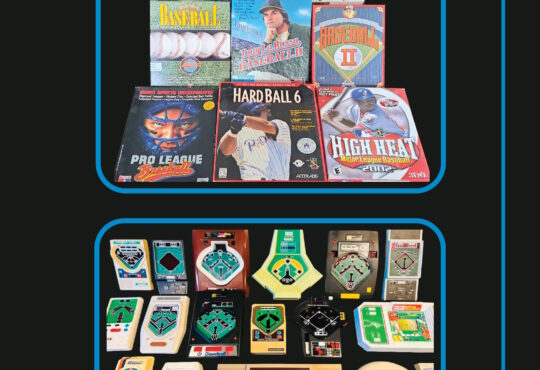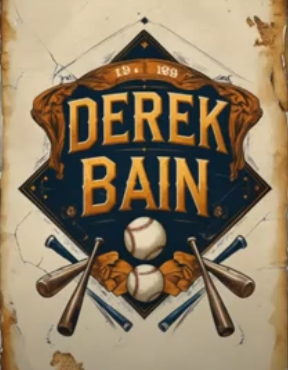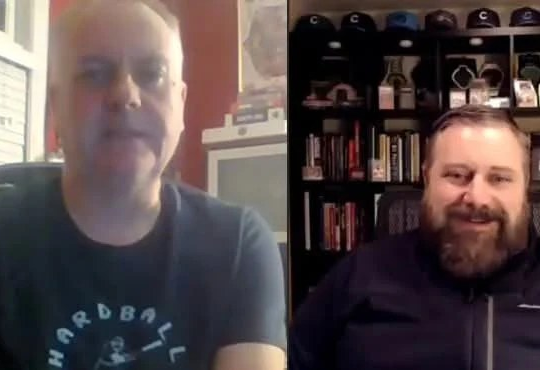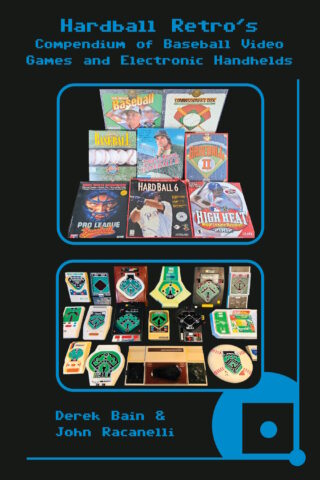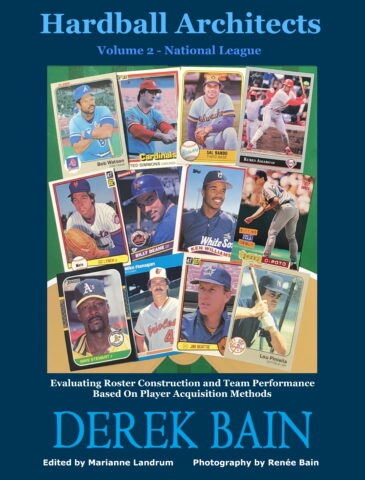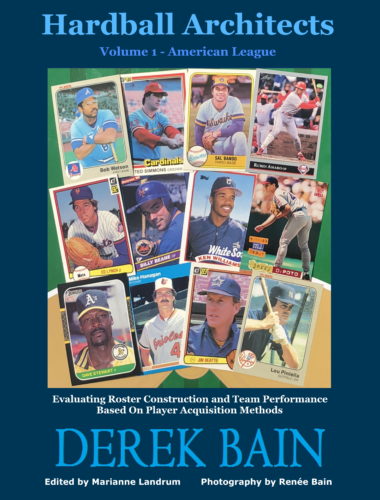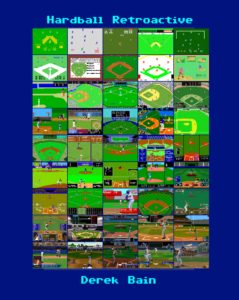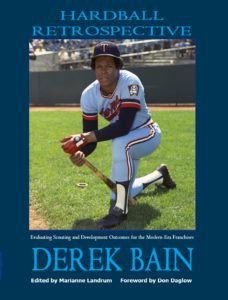State of the Game – Mike Port on Umpiring, Rule Changes and Analytics

Mike Port’s professional baseball career spanned more than four decades, from 1969 to 2011. When his aspirations to play in the big leagues ended with an injury shortly after signing with San Diego, he accepted a position in the Padres’ minor league system and worked his way up to the role of Farm Director. In 1977 he began a 14 year stint with the California Angels where he was promoted to the General Manager position in September 1984. Following 18 months as the first President of the Arizona Fall League, Mr. Port migrated to the East Coast to begin a 12-year run with the Boston Red Sox as an Assistant GM. He held the acting General Manager title during the 2002 season. He was named Major League Baseball’s Vice President of Umpiring in August 2005 and remained in that position through the 2011 campaign. I conducted a telephone interview with Mr. Port in September 2020 where we discussed the General Manager’s role and responsibilities (to be included in my upcoming book, Hardball Architects: Volume 2). Our chat drifted into topics such as umpiring, instant replay and various rule changes that have been implemented in the past decade. I am presenting that segment of our dialogue here.
Interview with Mike Port, Angels GM (1984-1991), Red Sox GM (2002)
DB: A number of rule changes were implemented for the 2020 season – the three-batter minimum for pitchers, 7 inning double-headers, extra innings / runner on second base, designated hitter in the National League. It remains to be seen which rules will stay on the books.
MP: I was told in early September that it’s “under consideration” for Major League Baseball to make all games seven innings. Certainly they’re going to forego a lot of concession revenue. As one former pitching specialist (coach and instructor) told me, “They’re playing these seven inning double headers. Well, that’s still fourteen innings in one day. So, you’re getting the games in, but is it at some expense to the people on your staff?”
DB: They do have the expanded rosters right now. You’ve got the designated hitter in the National League this year. The extra-inning rule, starting with the runner on second base.. MLB has some leeway at the end of the year to evaluate what worked and what didn’t.
MP: I think any athletic endeavor is a matter of overcoming adversity. Almost every time something (adverse) happens, the current mentality is to try to put a Band-Aid on it. The “Buster Posey” rule, some people argue that Buster Posey was out of position a bit when he was injured. I’ve had other veteran catchers tell me, with respect to the current rule, “Did the runner have a clear lane? Did the catcher have possession of the ball?” You talk to people like Mike Scioscia, Pat Corrales, Steve Yeager.. people who were adept or made their living by blocking the plate. It’s this simple – if you don’t want to get hurt, get out of the way. If you want to ‘take one for your team’, block the plate. Having had the privilege of working with the umpires, it certainly puts a burden on the umpire to determine whether the runner was provided a clear lane to the plate. Did he get down in time? Did the catcher have possession of the ball? You’re into a lot of added judgments there. The same with respect to plays at second base.. it’s part of the changing nature of the game. For those of us who are traditionalists, sometimes you have to wonder to what extent they are ultimately to the positive.
DB: The rules of the game are ever-changing, from altering the height of the pitching mound after the 1968 season to the talk of experimenting with the distance from the mound to home plate in the Atlantic League last year. The potential use of robot umpires.. understanding the desire to implement technology, the ability to use instant replay, etc. In essence, you want to get the call correct, but you delay the game and interrupt the flow.
MP: I can tell you, with regards to the umpires, going back ten years and prior to the advent of replay as they have it now, we had umpire observers and supervisors who witnessed about 50 percent of the games played first-hand. Sitting in the press box, they had access to replay. They would chart and document the calls that the umpires made. We would take the results of those calls, and probably the simplest thing to do would be to say, “Let’s double that to give us the number of missed calls over 100 percent of the games.” Instead, the total calls that an umpire would make over the course of a season, just to be safe, we would quadruple the number of missed calls. The Major League staff would still average in the neighborhood of 97 or 98 percent correct calls. So it becomes a bit of mystery to me exactly what they are trying to accomplish with replay as it is now other than somebody being touched by the lace of a glove as they slide into second base. The same goes for balls and strikes with regards to the robot umpires. On whatever system, all the way back to .. it was originally called QuesTec, then SportVision, and then I think they went to TrackMan .. every time Major League Baseball would introduce a new system, they would tell us, “This is the best system money can buy. This is the new version of HDTV. This is bigger and better than the last system.” Fine, but every time, the umpires .. I was told that the 2019 staff averaged north of 98 percent in terms of calling pitches accurately. Yet when you would go to the people at MLB, they would look at that number and would say, “Wait a minute – these guys can’t be that good!” and we would say, “Wait a minute – you gave us the system!” The other thing that I found during the discussions over the years.. people saying, “Robot umpires – we have the technology. Because we have the technology, we should use it.” My response had always been, well, what about the human factor? “No, we have the technology, we should use it.” Fine, then you won’t mind going to the robot pitcher and the robot hitter. To which the most immediate comeback was, “Well, we don’t want to lose the human element.” So all things are possible .. In all of my years in baseball, I probably heard more about the game, whether it be strategy or techniques, while working with the umpires than anything else.
DB: I’m amazed by the number of rules that the umpires have to keep track of, and to get that percentage of the calls correct is pretty incredible.
MP: They are amazing and they take great pride. Recently, the Yankees and Rays were going at it, with pitches coming too close to members of the respective clubs. The umpires issuing or not issuing warnings soon enough .. the rules have fascinated me because I remember that during my time with the umpires, one of the younger umpires issued a warning against a particular club. That club’s owner called me the following day, very irate. I explained that, in issuing the warning, that umpire probably saved one of your players from getting injured because the other club would be inclined to retaliate, and the next guy (to deliberately throw at a player) would be out of the game. Once he calmed down, this owner, who I think had owned a club for ten years, told me, “I think the home plate umpire could be a pretty good umpire but he should only work at second base!” So the lack of knowledge about the rules and why umpires do the things they do, it comes down to probably a lot like legislation. It’s the rule – if you don’t like the rule, then change the rule.
DB: The umpires don’t specialize – they need to know all the rules and how to work the different angles. One day they’re behind the plate, the next day they are at third base, etc. They have to know their positioning on certain plays.
MP: Their timing, and as difficult as umpiring school may be, they may not see a play for ten years and then, bang, all of sudden it’s on them with a park full of 40,000 people and they’ve got to make the right decision. People say that the umpires are not accountable.. It’s just that people have no idea how accountable they are. They’re evaluated on everything you can imagine.
DB: We (as fans) have the ability to second-guess and look up a rule while the umpires have to make that decision in real-time, right there in the ballpark.
MP: It’s astonishingly so often correct. Having worked with them I developed the adage that probably applies to any officiating endeavor. “It’s a job that anyone can do, until you try it and find out you can’t even come close.” So, credit to them, but I think that is another observation that many people playing the game today including some of the highest-paid players and many managers don’t know the rules. The players are charged with consuming information, going out and trying to hit the ball out of the park.
DB: It would be interesting to watch during Spring Training if they had a couple of players become umpires for a day and see if they gain a new perspective.
MP: Well, it’s funny you would mention that because there were a couple of times in the presentation that I would make annually at the General Manager’s meeting, I would present them with the idea, “Why don’t you each pick a game next Spring, and play it without any umpires?” Over the two or three times where I presented that idea, I never had any takers. It’s fascinating to me that nobody wants (the umpires) around but no one will play without them. Just another of the game’s ironies, I guess! Another change to the entertainment factor of baseball, unless there’s an ejection over a ball/strike call, you don’t have arguments anymore. That used to be part of the entertainment value. I think fans used to love watching Billy Martin or Lou Piniella or Earl Weaver.. and the umpires knew how to handle that. It was an interesting and entertaining part of the game. Now, you have somebody slide into second base on a close play and, rather than arguing the play, you have the manager clapping his ears to signal for a replay (challenge).
DB: Or peering down the tunnel towards the video room to wait and see if he gets the “thumb’s up” to challenge the call or not..
MP: Exactly, and in the ultimate, even with replay you’ve got a judgment decision being made by another human being, perhaps hundreds or even thousands of miles away. Hopefully it brings something better to the game but I just think there are parts of it compared to when I was involved that are missing.
DB: Even tweaking the number of pitching changes, I think you’re talking about shaving a few minutes of the average length of a game. I don’t see how that’s going to contribute much in the long term.
MP: I saw a quote from Commissioner (Rob) Manfred that with the rule changes, he said that his critics considered it as if he had committed “Crimes against humanity!” One of the things he mentioned was the intentional walk rule. Years ago, Detroit had a pitcher who was a former Ohio State quarterback by the name of Joe Sparma, who could not intentionally walk someone. If you had men on base and he tried to issue an intentional walk, he was just as likely to throw it halfway up the backstop screen as he was to get the ball to the catcher. Now players can’t advance on a play like that. As far as saving time, when that rule was instituted, they said that was going to save 30 seconds. One of my close former umpire associates called me and said, “Just think if there are 15 intentional walks per game, we will save 7 ½ minutes!”
DB: Given the frequency of intentional walks per game (753 Intentional Walks in 4858 Games during the 2019 season) it’s such an insignificant time-saver over the course of a year or even on a per-game basis.
MP: In the first year of the Arizona Fall League (1992), the average game time was 2 hours and 23 minutes. Granted, we didn’t have extended time between innings because of television commercials, but the teams still have to change sides and the pitchers need to warm-up. The reason, thanks to the players in the league that year, was the Expansion Draft for the Colorado (Rockies) and Florida (Marlins) was also held in the Fall. We had told the players, “We know you hustle but just be aware that scouts are going to be looking for people who play the game with enthusiasm and hustle.” The players figured out that it was a better game when they had action, when the pitchers worked at a better pace. They did not take it to an extreme or make a joke out of it, but they moved themselves around pretty good. After an out, they would throw the ball around, tag, let’s go.. the pitchers found that working with a little bit better dispatch helped them from a muscle memory perspective.. the hitters found out that being in the (batter’s) box, ready for the next pitch kept them in the groove a little bit better. With the pace that the pitchers worked, the infielders found that they were more into the game. They weren’t strolling around between pitches, waiting for somebody to make a decision about when to throw. Certain elements like that have been lost with changes over the years.
DB: My father and his friend had tickets for Sunday games at Yankee Stadium during the mid-to-late Eighties and early Nineties. I attended a lot of games during a 10 year period from 1984 to 1993 and to me, three hours at the ballpark was great! I was in no hurry to get home. We made a day trip out it, including the ride in and out of the city, checking out the souvenir shops outside the stadium and seeking autographs or catch home run balls during batting practice.
MP: Early on we used to consider that a game would take 2 ½ hours although we were like you. We were at the ballpark early and sort of hated when it finally concluded. The nature of the game was such that 2 ½ hours was normally the mark.
DB: I don’t know if the issue is necessarily the time of the game, or the start times for playoff games.. My younger son is a Cubs fan and he wasn’t able to stay awake the night that they won the World Series because with the rain delay, that game dragged into the early morning hours and he had school the following day.
MP: How well I know .. tell your son he had company because I was there with the FOX crew. I was working as a Rules Consultant for FOX, so I was there in the booth with Joe Buck and John Smoltz. If your son wasn’t able to stay awake, certainly I wasn’t either! Time of game is one thing but I think within the game, pace of game is probably an important factor as well because nowadays so many games are almost lacking the connotation of action, let alone actual action. When you have balls put into play on average once every 3 to 3 ½ minutes..
DB: Especially now with the obsession over launch angle and all of the strikeouts now, the game is a bit tougher to watch.
MP: Pitchers, with the free-flow of information, even though the managers and the pitching coaches are giving signs from the dugout, relaying it to the catcher who then relays it to the pitcher.. and now the pitcher stands there as if this is all a mystery to him and tries to figure out what to throw and where to throw it.
DB: I attended a game in Philly two years ago where the umpire (Joe West) confiscated a scouting card from the pitcher (Austin Davis). West cited Rule 6.02(c)(7), which states “the pitcher shall not have on his person, or in his possession, any foreign substance.” MLB subsequently ruled that pitchers may use scouting cards. (“Pitchers allowed to use note cards, MLB says.”) I noticed outfielders referring to those cards in recent years to confirm where they should position themselves for certain hitters but not pitchers. Back in the Eighties and Nineties, I feel like the players just intuitively knew where to position themselves.
MP: That was part of their ability.. you’d scout them and go out and play the games. There’s nothing wrong with preparing. Joel Sherman of the New York Post recently wrote, “Prepare all you want, but then go out and play the game.” The Dodgers had a relief pitcher years ago by the name of Mike Marshall.. they also had an outfielder by the same name, but the pitcher had a Ph.D. in kinesiology. He once relieved in 106 games in one year (1974) and never had an arm problem. I think he still teaches pitching, but for a very short span we had him with the Angels for two days. He wanted to make a comeback in 1983. He was big on what he referred to as muscle memory. For pitchers, the example he gave me was, “Look, if you were playing a game of darts, would you go to a bar and throw one dart and then come back half an hour later and throw another one?” He said, “No, you get the dart back and you go after it. To work with regularity, your muscles remember where the ball is supposed to go.” I think he subsequently commented many years later that he felt that was part of the problem with pitchers now.. that they spend so much time between pitches that they perhaps lost some elements of what he referred to as muscle memory.
DB: I’m sure that’s the case but part of the problem today is how often the batter is allowed to step out of the batter’s box to adjust their elbow pads and recalibrate. A lot of time is spent between pitches waiting for the batter to get set again.
MP: I think the same premise holds for the hitters. When you watch old games on TV, they swing and miss, and they’re back in the box and ready to go again. As much as I love a lot of what Mike Marshall had to present.. in his comeback attempt we sent him to our Triple-A club in Edmonton to make a start. The idea was that he would make a start there, and then come back to Anaheim the next day. In that start, I think he lost 14-3. (Marshall allowed 9 hits, 5 walks and 9 earned runs in 1.1 innings.) He came in the next day and (Angels GM) Buzzie (Bavasi) had me tell him, “Sorry, it’s just not going to work out.” I’ll never forget, Mike said, “Look, that was Triple-A. You have to understand that the hitters at that level are not smart enough to know which pitches they’re not supposed to be able to hit.” I could only tell him, “Mike, you got me on that one but nonetheless…” One last thing that I try to incorporate when speaking to people about the old days versus the modern.. I know you’re familiar with Dr. Lewis Yocum (Angels team physician, 1978-2013). When I was running the Angels it was Dr. Yocum who gave me one of the best pieces of scouting advice that I ever received. I’ll leave the player nameless, but we had a player on the Angels of substantial ability but he just had trouble focusing on the task at hand. He wanted to play baseball but he wasn’t really committed to it.. kind of take it or leave it, but he did have the ability. We sent him to Dr. Yocum for a simple procedure to have his knee scoped. That afternoon I called Dr. Yocum and I said, “Lew, just checking in. Is he going to be OK?” Dr. Yocum said, “Well, his knee is fine but we don’t do heart transplants!” That has very broad applications but I consider that some of the best scouting advice I’d ever received.
DB: I know that back in the old days, the scouts used to get to know the player’s families and really find out as much background information on each individual that they were looking to draft or sign to a contract. I don’t know if that’s the case anymore.
MP: Sometimes I find myself with the wonderment of Analytics.. can they really measure what is within the individual? I think that’s something more that scouts can get to the bottom of, except that scouts are now a diminishing breed in number.
Additional Links
Kenney, Kirk. “MLB umpire, former official concerned with technology replacing ‘human element’.” The San Diego-Union Tribune. June 29, 2019. https://www.sandiegouniontribune.com/sports/mlb/story/2019-06-29/sabr-convention-49-san-diego-umpire-panel-replay-review-electronic-balls-strikes-mike-port-gerry-davis
Muskat, Carrie and Joe Bloss. “Pitchers allowed to use note cards, MLB says.” MLB.com. September 2, 2018. https://www.mlb.com/phillies/news/pitchers-allowed-to-use-note-cards-mlb-rules-c293021942
Stark, Jayson. “Former umps chief on replay: ‘Let’s go’.” ESPN.com. January 25, 2013. https://www.espn.com/blog/jayson-stark/post/_/id/50/former-umpires-chief-mike-port-shares-thoughts-instant-replay
Photo credit – MLB.com http://mlb.mlb.com/mlb/official_info/umpires/camp/index.jsp?content=staff&bio=port_mike
About the Author
I am a New Jersey native with a passion for baseball, statistics, computers and video games who enjoys spending quality time with his family.
“Hardball Architects – Volume 1 (American League)”, published in July 2020, is available in paperback and digital (Kindle) format at Amazon.com. Hardball Architects examines the trades, free agent acquisitions, draft picks and other transactions for the 30 Major League Baseball franchises, divided into a 2-volume set (American League and National League). All key moves are scrutinized for every team and Sabermetric principles are applied to the roster construction throughout the lifetime of the organization to encapsulate the hits and misses by front office executives.
“Hardball Retroactive”, published in June 2018, is available in paperback and digital (Kindle) format at Amazon.com. Hardball Retroactive is a modest collection of selected articles that I have written for Seamheads.com along with my Baseball Analytics blog since 2010. Exclusive content includes the chapter on “Minors vs. Majors” which assesses every franchise’s minor league successes and failures in relation to their major league operations.
“Hardball Retrospective” is available in paperback and digital (Kindle) format at Amazon.com. Supplemental Statistics, Charts and Graphs along with a discussion forum are offered at TuataraSoftware.com. In Hardball Retrospective, I placed every ballplayer in the modern era (from 1901-present) on their original teams. Using a variety of advanced statistics and methods, I generated revised standings for each season based entirely on the performance of each team’s “original” players. I discuss every team’s “original” players and seasons at length along with organizational performance with respect to the Amateur Draft (or First-Year Player Draft), amateur free agent signings and other methods of player acquisition. Season standings, WAR and Win Shares totals for the “original” teams are compared against the real-time or “actual” team results to assess each franchise’s scouting, development and general management skills.
Don Daglow (Intellivision World Series Major League Baseball, Earl Weaver Baseball, Tony LaRussa Baseball) contributed the foreword for Hardball Retrospective. The foreword and preview of my book are accessible here.
“Hardball Retrospective – Addendum 2014 to 2016” supplements my research for Hardball Retrospective, providing retroactive standings based on Wins Above Replacement (WAR) and Win Shares (WS) for each “original” team over the past three seasons (2014-2016). Team totals from 2010 – 2013 are included for reference purposes. “Addendum” is available in paperback and digital (Kindle) format at Amazon.com.
